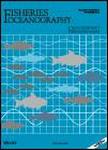版权所有:内蒙古大学图书馆 技术提供:维普资讯• 智图
内蒙古自治区呼和浩特市赛罕区大学西街235号 邮编: 010021

作者机构:Ctr Invest Biol Noroeste CIBNOR La Paz Mexico Inst Politecn Nacl CICIMAR Dept Pesquerias & Biol Marina La Paz Mexico CONACYT Ctr Invest Biol Noroeste CIBNOR La Paz Mexico
出 版 物:《FISHERIES OCEANOGRAPHY》 (水产海洋学)
年 卷 期:2019年第28卷第2期
页 面:203-211页
核心收录:
学科分类:0908[农学-水产] 0707[理学-海洋科学] 09[农学]
基 金:Inter-American Tropical Tuna Commission
主 题:generalized additive models satellite imagery tuna purse-seine fishery
摘 要:Striped marlin (Kajikia audax) is an epipelagic fish distributed in oceanic and coastal waters of the Pacific Ocean. This species is usually found in warm and coastal waters with high primary productivity. The main goal of this study was to describe the spatial segregation of striped marlin by average Eye-Fork length (EFL) in the eastern Pacific Ocean (EPO) and its relationship with environmental variables using EFL data obtained from tuna purse-seining and Generalized Additive Models (GAMs). The model suggested that larger individuals of striped marlin were more likely to be found in waters with high Chlorophyll-a concentration (2 mg/m(3)) and with temperatures lower than 25 degrees C, within a region known as the cold tongue and the Humboldt current system, while smaller individuals were more likely to be found in warmer and low productive areas within a region known as the warm pool of the EPO. We observed that set type caused a large variation on average EFL of striped marlin;larger fish were captured in sets associated with floating objects (natural and manmade), while smaller fish were captured in sets associated with dolphins. Despite this, our findings suggest that striped marlin has a latitudinal gradient in average EFL;larger individuals occurred predominantly south of 10 degrees N, while smaller ones occurred predominantly in coastal waters between 10 degrees N and 20 degrees N, thus demonstrating a spatial segregation of the species affected by its maturity stage.